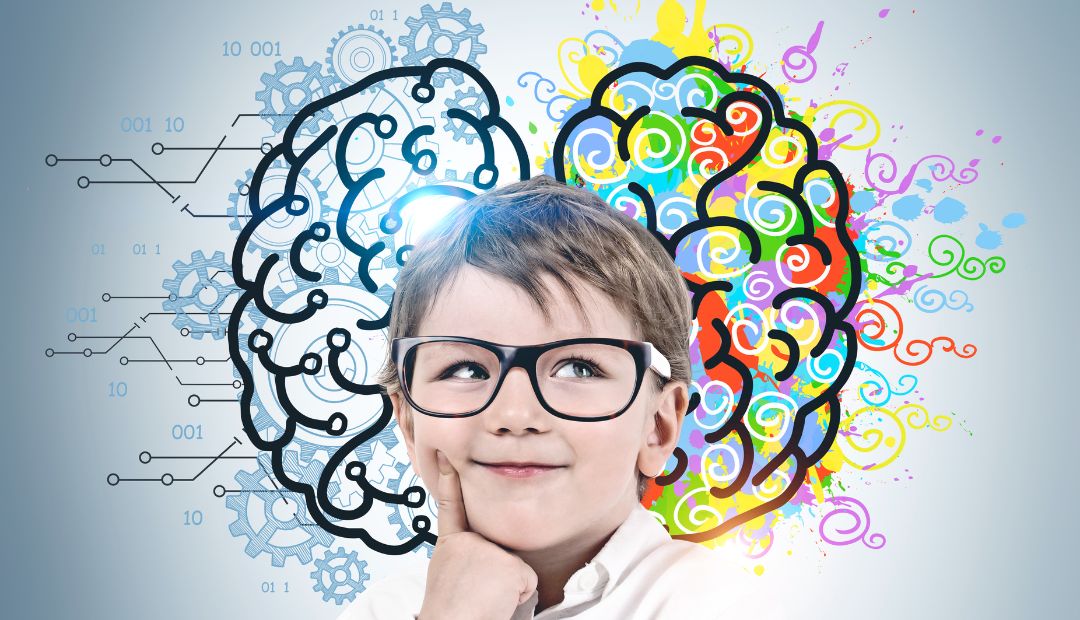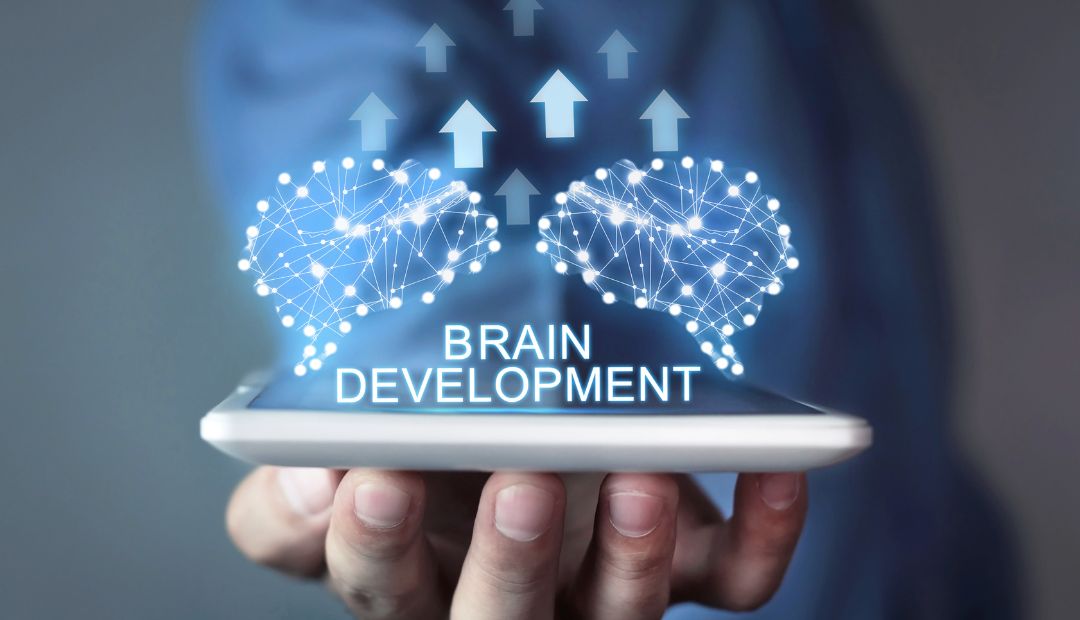
Improving Brain Function in Autism
Supporting the development of a young child on the autism spectrum requires a multifaceted and highly individualized approach. This is especially true in cases where the child exhibits speech delays and signs of impaired neuroplasticity—the brain’s ability to adapt and rewire. According to the latest research, improving brain function relies on a combination of complementary strategies: early intervention, targeted therapies, nutritional support, and the optimization of cellular metabolic processes such as methylation. Parents and professionals alike are increasingly exploring holistic strategies for improving brain function in autism through safe, evidence-based methods.
In this guide, we explore the range of interventions that can help enhance brain function in a 6-year-old autistic child, with a special focus on jump-starting speech, improving learning capacity, and supporting neurological maturation. Particular emphasis is placed on identifying and addressing suspected cerebral folate deficiency, which may hinder language development, as well as supporting methylation pathways through carefully selected, medically supervised nutritional supplementation. The ultimate goal is not merely symptom management, but the unlocking of the child’s developmental potential and the stimulation of the brain’s regenerative capacity—allowing the child to grow and thrive at their own pace, while making the most of their unique abilities.
Improving brain function in autism requires a personalized approach that includes early intervention, speech therapy, and targeted nutritional support.
Speech and Language Development Interventions
Children on the autism spectrum with speech delays benefit greatly from early and intensive speech and language therapy. Such therapy leverages neuroplasticity – the brain’s ability to form new connections – to improve communication skills. Early initiation of speech therapy has shown favorable outcomes in young children with ASD pubmed.ncbi.nlm.nih.gov. Therapists focus on increasing a child’s expressive language (using words or augmentative tools to express needs) and receptive language (understanding others). This often involves play-based exercises, modeling of words, and positive reinforcement for communication attempts.
Augmentative and Alternative Communication (AAC) tools are critical for non-verbal or minimally verbal children. These include picture-based systems (like the Picture Exchange Communication System) and speech-generating devices (tablets or dedicated devices). Research shows AAC not only provides a means of communication but can also enhance spoken language development. In a review of AAC interventions, high-tech speech-generating devices were more effective in improving social communication, interaction, and even speech production than low-tech methods neuroregulation.org. In practice, this means that a child using an app with voice output to request items may gradually attempt more speech sounds themselves. Importantly, AAC does not hinder speech – instead, it can reduce frustration and encourage language growth. Parents and therapists should work together to personalize the communication system (e.g. using the child’s favorite symbols or voice settings) and consistently integrate it into daily routines.
Therapies that target both comprehension and expression are most effective. For example, strategies like simultaneous communication (speaking while signing) or using visual supports (gestures, picture schedules) can reinforce understanding while the child learns to vocalize or sign words. Social communication therapies (often led by speech-language pathologists in group settings) help children practice turn-taking, eye contact, and conversation skills in a structured way, further rewiring neural pathways for communication. Over time, these interventions aim to improve the child’s ability to convey their thoughts and needs, which in turn supports cognitive development and reduces behavioral frustrations.
Table: Key Speech & Communication Interventions and Outcomes
| Intervention | Intended Outcomes/Benefits | Evidence/Notes |
|---|---|---|
| Speech-Language Therapy (one-on-one or small group) | Improve expressive and receptive language; build vocabulary and sentence use; improve articulation and social communication skills. | Early intensive speech therapy yields favorable communication outcomes pubmed.ncbi.nlm.nih.gov. Tailored to child’s needs (e.g. play-based for young children). |
| Augmentative Communication (AAC) – e.g. picture boards, sign language, speech-generating devices | Provide an alternative means of communication, which can reduce frustration and encourage spoken language. | Effective for increasing communication; high-tech AAC showed greater gains in social interaction and speech productionneuroregulation.org. Should be introduced with speech therapy guidance. |
| Parent-Implemented Communication Strategies (e.g. Hanen “More Than Words”) | Enhance language through daily routines: parents learn to prompt communication and respond to child’s cues. | Trains parents in techniques like modeling language and waiting for the child’s initiation. Improves social reciprocity and initiations (evidence from multiple case studies; recommended by clinical guidelines). |
| Social Skills and Pragmatic Language Groups | Improve conversation skills, understanding of body language, and peer interaction. | Helps children practice communication in social contexts. Often led by SLPs or psychologists; shown to improve pragmatic language use in school-age children (per anecdotal reports and small studies). |
| Music Therapy (singing, rhythm exercises to prompt vocalizations) | Stimulate speech/language centers via melody and rhythm; improve vocal output and verbal imitation. | Can be enjoyable and engaging for the child. Some evidence of improved communication behaviors, though a meta-analysis found more impact on social interaction than on direct speech outcomes pmc.ncbi.nlm.nih.gov. |
Nutritional Interventions and Cerebral Folate Deficiency
Nutrition plays a foundational role in brain function, and many evidence-based dietary interventions and supplements can support neurodevelopment in autism. The first step is ensuring a balanced diet that covers all essential nutrients. Many autistic children have selective eating habits, so working with a nutritionist or feeding therapist can help broaden food acceptance and prevent deficiencies. For example, iron deficiency or zinc deficiency can impair cognition and attention; if blood tests show low levels, supplementation under medical supervision is warranted. A diet rich in whole foods (vegetables, fruits, proteins, healthy fats) provides vitamins and minerals needed for brain health, while minimizing ultra-processed foods may help reduce behavioral fluctuations. Hydration and sufficient sleep (which can be influenced by diet) are also important for cognitive focus.
One widely known dietary approach for autism is the Gluten-Free Casein-Free (GFCF) diet, which involves removing wheat/gluten and dairy/casein from the child’s meals. The hypothesis is that some children have sensitivities or opioid-like reactions to these proteins that affect brain function. Many families report improvements in behavior or gastrointestinal (GI) comfort anecdotally. However, clinical studies have shown mixed results – a review by the American Academy of Pediatrics noted that although GFCF diets are popular, there is “little evidence to support or refute” their effectiveness aafp.orgaafp.org. In practice, a trial of a GFCF diet might be considered if the child has GI issues or known intolerances, but it should be done carefully (to ensure nutritional adequacy) and with the understanding that it may not yield dramatic changes in every case. Any elimination diet should be guided by a professional (doctor or dietitian) and monitored for improvements or adverse effects.
Cerebral Folate Deficiency (CFD) is a specific medical concern in some children with autism, including this 6-year-old (suspected based on methylation status). CFD refers to low levels of folate in the brain (cerebrospinal fluid) despite normal folate in blood. A common cause is folate receptor alpha autoantibodies (FRAA) – antibodies that block the transport of folate across the blood-brain barrier. Strikingly, studies have found these autoantibodies in a significant subset of children with autism (one study reported FRAA in ~75% of children with ASD in the sample)nature.com. These antibodies can lead to neurological issues (since folate is crucial for brain development and neurotransmitter production). If CFD is suspected, doctors may recommend testing for FRAA via a blood test (often called the FRAT – Folate Receptor Antibody Test) as a noninvasive indicator. A more definitive diagnosis of CFD would require measuring 5-MTHF in cerebrospinal fluid, but that entails a spinal tap which is invasive and not commonly done unless severe symptoms warrant it. Thus, a positive antibody test plus clinical suspicion often leads clinicians to a therapeutic trial of folate supplementation.
The intervention of choice for cerebral folate issues is high-dose folinic acid (also known as leucovorin calcium). Folinic acid is a bioactive form of folate that can utilize alternate transport pathways into the brain. Unlike plain folic acid, folinic acid can cross into the CNS even when receptors are blocked potomacpsychiatry.com. In clinical trials, folinic acid supplementation has yielded notable improvements. A randomized placebo-controlled trial (12 weeks of high-dose folinic acid, ~2 mg/kg up to 50 mg daily) in children with autism and language delay found significantly greater gains in verbal communication in the folinic acid group compared to placebo pubmed.ncbi.nlm.nih.govpubmed.ncbi.nlm.nih.gov. The effect was especially pronounced in children who tested positive for folate receptor autoantibodies, who improved by an average of 7+ standard score points in verbal communication (a medium-to-large effect) pubmed.ncbi.nlm.nih.govpubmed.ncbi.nlm.nih.gov. Parents and clinicians also noted improvements in daily living skills and attention span in the treated group pubmed.ncbi.nlm.nih.gov. Another open-label study of children with ASD and FRAA reported improvements in receptive and expressive language, attention, and reduction in stereotypical behaviors after folinic acid treatment nature.com. About one-third of children showed moderate to major improvements, and side effects were minimal nature.com. This evidence suggests that folinic acid, under medical supervision, can substantially benefit autistic children with CFD – particularly in language and adaptive function – by restoring folate-dependent brain pathways.
Beyond folinic acid, vitamin B₁₂ (cobalamin) is another key nutrient for brain and methylation (discussed in detail in the methylation section below). Many integrative autism specialists will test a child’s B₁₂ levels or methylation markers and consider B₁₂ supplementation if indicated. The most evidence-backed approach in autism is methylcobalamin injections. A randomized controlled trial of injectable methyl-B₁₂ (75 µg/kg, given subcutaneously every 3 days for 8 weeks) showed that children receiving methyl-B₁₂ had greater clinical improvement (on physician-rated scales) than those on placebo pubmed.ncbi.nlm.nih.govpubmed.ncbi.nlm.nih.gov. The improvements correlated with positive changes in the kids’ metabolic profile – specifically, better methylation capacity (higher methionine and SAM/SAH ratio)pubmed.ncbi.nlm.nih.gov. In practical terms, families who pursue methyl-B₁₂ injections often report gains in alertness, engagement, and sometimes speech, although responses vary. This therapy should be overseen by a physician, as it involves injections and periodic monitoring; fortunately, methyl-B₁₂ is water-soluble and side effects (if any) tend to be mild (e.g. hyperactivity or irritability in a few cases, which usually can be managed by dose adjustments). Oral or sublingual B₁₂ is another option for maintenance if injections are not feasible, though injections ensure better bioavailability for children who may have absorption issues.
Other vitamins and supplements have been investigated to support brain function in autistic children:
-
Vitamin D: Adequate vitamin D levels are important for neurodevelopment and immune function. Vitamin D deficiency is common in children with autism, and there is emerging evidence that supplementation can improve certain symptoms. A 2023 meta-analysis of RCTs (8 trials, n=266) found that vitamin D supplementation significantly reduced stereotypical repetitive behaviors in children with ASD pmc.ncbi.nlm.nih.gov. There was also a trend toward improvement in social responsiveness and autism severity scores, though not all changes reached statistical significance pmc.ncbi.nlm.nih.gov. Some individual trials (now retracted) had initially reported global improvements, but even after excluding those, vitamin D appears beneficial for behaviors like irritability and hyperactivity in some childrenpubmed.ncbi.nlm.nih.gov. Given vitamin D’s safety profile, many clinicians will check 25(OH)D levels and supplement to the mid-normal range. It’s important to use appropriate dosing (often around 1000–2000 IU daily for a young child, or higher if deficient, as directed by a physician) and monitor levels to avoid excessive dosing. Improvements may include better mood, attention, or sleep – all of which support learning.
-
Omega-3 Fatty Acids: Omega-3 fats (EPA and DHA, found in fish oil) are critical components of brain cell membranes and have anti-inflammatory effects. Several studies have examined omega-3 supplementation in autism for improving cognitive and behavioral outcomes. The evidence is somewhat mixed, but promising in certain domains. An umbrella review of meta-analyses concluded that omega-3 supplementation may modestly improve hyperactivity, lethargy, and stereotypy in children with ASD cpn.or.kr. For example, some trials noted improvements in attention span or a reduction in aggressive behavior with omega-3 use. However, effects on core social and communication symptoms are less clear, and not all studies show significant benefits. Given that omega-3s are generally safe and beneficial for overall health, a trial of fish oil (under guidance, typically 1–2 grams of EPA/DHA combined per day for a child) is often recommended. Parents should choose a high-quality, purified fish oil to avoid toxins, or use algal oil if they prefer a plant-based source. It may take a few months to observe any changes in behavior or learning.
-
Multivitamin/Mineral Supplements: Children with autism may have atypical diets or metabolic differences that put them at risk for suboptimal levels of various nutrients (B vitamins, vitamin C, etc.). A broad-spectrum multivitamin formulated for children (or even specialized autism-targeted nutrient formulas) can act as “insurance” against hidden deficiencies. Some research (including placebo-controlled studies) suggests that a comprehensive multivitamin/mineral supplement can improve sleep quality, digestive health, and possibly developmental progress in children with ASD, though more research is needed. These supplements often contain B₆, B₁₂, folate, antioxidants, magnesium, and others that support metabolic pathways. It’s crucial not to megadose individual vitamins without medical supervision, since more is not always better (for instance, too much vitamin A or zinc can cause problems). A pediatrician or specialist can help select an appropriate supplement and dose.
-
Other Supplements: A few other supplements have garnered interest for neurodevelopment. N-acetylcysteine (NAC), an amino-acid-derived antioxidant, has been studied in autism to support glutathione (the body’s main antioxidant) and reduce irritability. A notable pilot trial at Stanford found that NAC (in gradually increasing doses up to about 60 mg/kg/day) led to a significant decrease in irritability and repetitive behaviors on the Aberrant Behavior Checklist med.stanford.edubmcpsychiatry.biomedcentral.com. NAC is relatively safe (some kids experience mild gastrointestinal upset) and is available over-the-counter, but it should still be discussed with a doctor. Magnesium and Vitamin B₆ is a classic combination that was reported decades ago to help some autistic children with calming and reducing stimming, though controlled studies are limited – it remains anecdotally used and is low risk. Probiotics and prebiotics (to improve gut health) are another avenue, given the gut-brain axis; while they mainly help GI symptoms, some families note better focus or mood when the child’s digestion is improved. These should be chosen based on the child’s GI needs (for example, specific strains for constipation vs diarrhea). Finally, if a child has a confirmed metabolic or mitochondrial issue, supplements like carnitine, CoQ10, or creatine might be recommended by a metabolic specialist to boost energy metabolism in the brain. These are very case-specific and evidence varies.
In all cases, medical supervision is paramount. Each child with autism is unique in their biochemistry, and what helps one may not help another. A healthcare provider can guide testing (e.g. checking blood for anemia, vitamin levels, organic acids, etc.), ensure supplements don’t interfere with any medications, and monitor progress. Nutritional interventions tend to be most effective when combined with behavioral and educational therapies – nutrients supply the “building blocks,” while therapy helps the brain use them to build skills. When implemented thoughtfully, dietary and supplement strategies can enhance the child’s overall cognitive function, energy, and responsiveness to other interventions.
A balanced diet rich in essential nutrients can play a significant role in improving brain function in autism.
Table: Nutritional Interventions and Their Targets
| Nutritional Intervention | Intended Outcome/Benefit | Evidence and Notes |
|---|---|---|
| Balanced diet & correcting deficiencies (iron, zinc, etc.) | Optimize overall brain development and energy levels; prevent cognitive impairment due to lack of essentials. | Iron deficiency can worsen attention and memory – treat if present. General healthy diet supports mood and focus (backed by pediatric nutrition guidelines). |
| Gluten-Free, Casein-Free Diet (eliminating wheat and dairy) | Reduce potential gut inflammation or opioid-like peptides that might affect behavior; improve GI comfort which can indirectly improve behavior. | Widely used but mixed evidence. Anecdotal improvements in some children, but overall research finds no conclusive benefit for core autism symptoms aafp.org. May be worth a monitored trial if GI issues exist. |
| High-Dose Folinic Acid (Leucovorin) for suspected cerebral folate deficiency | Bypass folate transport issues into the brain; improve language, attention, and adaptive behaviors by restoring CNS folate levels. | Positive RCT results: improved verbal communication and adaptive behavior (medium-large effect)pubmed.ncbi.nlm.nih.govpubmed.ncbi.nlm.nih.gov, especially in children with folate receptor autoantibodies. Generally well-tolerated nature.com. Requires prescription and monitoring (dosed ~2 mg/kg). |
| Vitamin B₁₂ (methylcobalamin) injections | Enhance methylation and neurotransmitter synthesis; improve alertness, sociability, and reduce autism severity scores in some cases. | RCT evidence: improved clinician-rated ASD symptoms and methylation biomarkers pubmed.ncbi.nlm.nih.govpubmed.ncbi.nlm.nih.gov. Parents often report gains in eye contact and responsiveness. Given subcutaneously every 2–3 days; should be overseen by a physician. |
| Vitamin D³ Supplementation | Support neurodevelopment and immunity; potentially reduce autism severity (especially repetitive behaviors and irritability). | Meta-analysis found decreased stereotyped behaviors with vitamin D vs placebo pmc.ncbi.nlm.nih.gov. Some trials also show reduced irritability/hyperactivity pubmed.ncbi.nlm.nih.gov. Safe if dosing is appropriate – monitor 25(OH)D levels. |
| Omega-3 Fatty Acids (fish oil) | Improve neuronal membrane fluidity and reduce inflammation; possibly improve attention and reduce hyperactive or aggressive behaviors. | Meta-analyses suggest modest benefits for hyperactivity and stereotypy cpn.or.kr. Inconsistent effects on core communication symptoms. Given its general health benefits and low risk, often recommended as an adjunct therapy. |
| Multivitamin/Mineral formula (broad spectrum) | Fill nutritional gaps; support metabolic pathways (methylation, antioxidant defense) broadly. | Some studies indicate improvements in sleep and GI issues. Many clinicians consider it part of standard care for ASD due to frequent selective eating. Choose versions without megadoses of any nutrient. |
| N-Acetylcysteine (NAC) | Boost glutathione (antioxidant) levels; reduce irritability and possibly repetitive behaviors by lowering oxidative stress. | Small trials show reduced irritability scores in ASD with NAC vs placebomed.stanford.edu. Needs higher doses (incrementally up to ~2400–4200 mg/day for a child). Should be used with medical advice. |
| Probiotics/Prebiotics | Improve gut health (reduce constipation, diarrhea, bloating) which can in turn improve behavior, sleep, and concentration. | Emerging research on gut-brain connection; at least one study on microbiota transfer showed both GI and behavioral improvements. Mostly adjunct for kids with significant GI symptoms. Safe to try specific strains for specific issues. |
| Other metabolic supports (e.g. L-Carnitine, CoQ10, B₆+Magnesium) | Support mitochondrial function and neurotransmitter synthesis; potentially improve fatigue, hypotonia, or calming. | Carnitine: A study showed improved social and stereotypical symptoms in ASD when carnitine deficiency was addressed. B₆+Mg: Historically reported to reduce self-stimulatory behavior in some cases. Evidence is mixed or low-quality; consider in specific situations. |
Note: Any supplement regimen should be individualized. It’s important to consult a pediatrician, neurologist, or integrative medicine specialist before starting these interventions. They can help prioritize which tests to run (e.g., ferritin for iron, 25(OH)D for vitamin D, RBC folate, homocysteine, etc.) and which interventions are most likely to help the child. They will also ensure that supplements don’t conflict with each other or with any medications (for instance, folinic acid and B₁₂ are typically very safe together, but certain interactions or over-supplementation could occur without guidance). With medical oversight, nutritional interventions can be a powerful component of a comprehensive treatment plan, promoting better brain function and receptivity to therapies.
Behavioral and Cognitive Development Strategies to improving brain function in autism
To improve focus, memory, and adaptive skills, behavioral interventions are the cornerstone for children with autism. The most established approach is Applied Behavior Analysis (ABA) and related therapies, which use systematic teaching and reinforcement to build skills and reduce problematic behaviors. ABA-based programs break down tasks into small steps and reward desired behaviors (like paying attention, finishing a puzzle, or using a word). Over dozens of studies, ABA (especially when started early and delivered intensively) has been shown to improve IQ, language, and adaptive functioning in many children with ASD. Meta-analyses indicate ABA leads to small-to-moderate improvements in adaptive behavior, communication, and socialization pmc.ncbi.nlm.nih.govpmc.ncbi.nlm.nih.gov, with larger gains corresponding to higher therapy intensity and duration. In practical terms, a young child might receive 15–25 hours per week of one-on-one therapy, working on goals such as listening to instructions, imitating actions or sounds, and learning self-care routines. Over 1–2 years, these children often make meaningful progress – for example, increasing their vocabulary, learning to dress themselves, or improving their ability to sit and attend in a classroom setting. ABA is considered a gold-standard, evidence-based intervention for autismpmc.ncbi.nlm.nih.gov, and while it requires significant commitment, it can significantly enhance brain function by reinforcing new neural pathways for learning and behavior.
Other therapies focus on developmental and adaptive skills in more naturalistic ways. Occupational Therapy (OT) is commonly provided to autistic children to address fine motor skills, sensory processing difficulties, and daily living skills. For instance, an OT might help a child learn to hold a pencil (for writing) or use utensils, or create a sensory diet (a routine of activities to help regulate the child’s arousal level for better focus). Sensory-based OT using Ayres Sensory Integration (ASI) techniques attempts to improve the brain’s processing of sensory information (touch, movement, sound, etc.), under the theory that better sensory integration will support attention and behavior. Parents often report improvements in tolerance to noise or touch, better attention, and calmer behavior with regular sensory OT sessions, and children may achieve specific individualized goals (like tolerating a haircut or sitting still for 5 minutes) more easily. Research on sensory integration therapy shows mixed results: several small studies and case series have found it can enhance self-care and socialization skills in autistic children (and help them meet personal therapy goals) research.aota.org. In fact, a review noted strong evidence from multiple RCTs that OT-SI helps children attain their individualized functional goals (such as dressing or play skills). However, a larger rigorous RCT in 2022 (the SenITA trial with 138 children) found that adding sensory integration therapy for 6 months did not significantly outperform standard care on broad outcomes, despite improvements noted in parent goal ratings pubmed.ncbi.nlm.nih.gov. This suggests that while sensory-based interventions can be helpful on a case-by-case basis (especially for specific tasks and sensory issues), their global effects on autism symptoms may be limited. Therefore, OT for sensory and motor skills is recommended as part of a holistic plan – particularly if the child has clear sensory challenges – but it should be complemented by behavioral and educational strategies for maximal benefit.
To specifically bolster attention and memory (cognitive skills), various techniques are used:
-
Structured Teaching and Visual Supports: Many children with autism are visual learners. Using visual schedules, timers, and clear step-by-step picture prompts can help a child understand what is expected and thus stay focused on tasks. For example, a morning routine chart with images (toothbrushing, getting dressed, etc.) can improve the child’s independence and reduce the need for prompts. Structuring the environment (clear workstations, minimal distractions) is a proven strategy from the TEACCH program and often increases on-task behavior and reduces anxiety, thereby indirectly improving focus and learning.
-
Reinforcement of Attention: Therapists often explicitly teach “learning-to-learn” behaviors like sitting in a chair, looking at the teacher, and following directions. Through ABA, a child might earn a small reward (like a sticker or a favorite activity) for gradually longer periods of sustained attention. Over time, this conditioning increases the child’s capacity to concentrate. Parents can apply similar principles at home (for instance, using a token board: “First finish this puzzle, then you get a turn on the swing”).
-
Cognitive Training Programs: Computerized cognitive training and therapeutic games have emerged as tools to improve working memory, executive function, and academic skills in children with neurodevelopmental disorders. For autistic children, specialized games or apps that require memory (like matching games), inhibitory control (like “Simon Says” type apps), or attention (like catching targets) can be both engaging and beneficial. A systematic review of executive function interventions in ASD found that most cognitive training programs led to improvements in executive skills and reductions in autism-related symptoms in children and teens pmc.ncbi.nlm.nih.gov. For example, a program might focus on working memory by having the child remember sequences of shapes or numbers – over several weeks, the child’s performance on memory tasks can improve, and some studies reported carryover to better academic skills or behavior regulation. However, the same review noted that gains tend to be task-specific and may not generalize widely to untrained skills like social interaction pmc.ncbi.nlm.nih.gov. This means that while a memory training game can improve memory test scores and perhaps help the child follow multi-step instructions better, it might not automatically improve, say, conversational skills. Therefore, cognitive training is best used as one element of a broader intervention strategy, potentially boosting the child’s capacity to learn in other therapies or school by sharpening their cognitive processing.
-
Play and Social Interaction Therapies: Approaches like Floortime (DIR) and the Early Start Denver Model (ESDM) combine play with developmental teaching techniques. These methods encourage the child’s intrinsic motivation and attention by following their interests and then challenging them to expand their circles of communication. For example, a therapist might join a child who is spinning a car wheel, and then gradually interject challenges (like making the car go “up, up, up and… down!”) to foster joint attention and problem-solving. Such naturalistic approaches have evidence for improving social-emotional skills and language, and because they are child-led, they often sustain the child’s focus longer than forced tasks. ESDM, in particular, in clinical trials has shown gains in IQ, language, and adaptive behavior in toddlers with autism compared to less intensive interventions. These gains are thought to result from harnessing brain plasticity during early development through enriching, relationship-based experiences.
-
School-based Supports: In the classroom, a 6-year-old with ASD and attention issues might receive accommodations to help with focus and memory. Examples include having a seat at the front, using noise-canceling headphones during work time, breaking tasks into shorter chunks, or having a personal aide prompt them back to task. Special education teachers use techniques like chunking information (so the child only has to remember a small bit at a time) and frequent feedback to improve the child’s learning outcomes. Over the year, with these supports, children often show improvements in their ability to follow classroom routines and learn academic content, essentially expanding their cognitive capacity through practice and support.
Adaptive skill training is another crucial aspect. Adaptive skills refer to daily living skills – eating, dressing, toileting, bathing, and age-appropriate independence. These do not always come naturally to children with autism and often must be taught systematically. Behavioral therapists can create task analyses (step-by-step checklists) for each skill and teach them through chaining (teaching one step at a time) and reinforcement. For instance, toilet training an autistic child might involve a strict schedule, visual reminders in the bathroom, and rewards for success. Similarly, learning to tie shoes might be broken into discrete steps taught over weeks. Consistent practice and reinforcement lead to new neural pathways that make these routines more automatic over time. Mastering adaptive skills greatly improves a child’s quality of life and confidence. Studies show that early intensive intervention leads to better adaptive outcomes (e.g., higher Vineland Adaptive Behavior scores) for children with autism compared to those who receive generic or delayed intervention pmc.ncbi.nlm.nih.gov. Parents should be active partners in this process – therapists often coach parents on how to practice skills at home (for example, encouraging the child to put on their own shirt every morning, even if it takes longer, to build independence).
It’s worth noting that addressing problem behaviors (tantrums, aggression, self-injury) is often necessary to make progress in cognitive and adaptive domains. Techniques derived from ABA, like Functional Behavior Assessment (to find out why a behavior is happening) and positive behavior support plans, can reduce disruptive behaviors that interfere with learning. Sometimes simply teaching a child to communicate (with words or AAC) their needs can dramatically reduce maladaptive behaviors (since the child no longer needs to scream or hit to get help, they can ask). This creates a virtuous cycle: better behavior -> more learning -> improved brain function -> even better behavior, and so on.
Finally, if a child’s inattention or hyperactivity is severe and persistent, evaluation for ADHD co-morbidity is appropriate around this age. Many autistic children also meet criteria for ADHD. In such cases, standard ADHD treatments (including behavioral strategies and potentially medication) can be beneficial. Stimulant medications (like low-dose methylphenidate) or non-stimulants (like guanfacine) have evidence of improving focus in children with ASD + ADHD, though they sometimes have a slightly higher rate of side effects in this population. Medications should always be prescribed by a physician familiar with the child’s case and started at low doses. When effective, medication can substantially increase the child’s availability for learning – for example, a child who could barely sit for 30 seconds may attend for several minutes with medical support, thereby getting more out of each therapy session or school lesson. Any medication use should be combined with the educational and behavioral interventions described above; pills don’t build skills, but they can create a state in which skill-building is more successful.
Table: Behavioral and Cognitive Development Interventions
| Intervention/Strategy | Intended Outcome/Benefit | Evidence/Remarks |
|---|---|---|
| Applied Behavior Analysis (ABA) (Early Intensive Behavioral Intervention) | Improve learning, communication, and adaptive skills through structured teaching and reinforcement. | Considered gold-standard: leads to gains in IQ, language, and daily skills in many children pmc.ncbi.nlm.nih.gov. Best results with early start (ages 2–5) and high intensity (20+ hrs/week over >1 year) pmc.ncbi.nlm.nih.gov. |
| Naturalistic Developmental Behavioral Interventions (ESDM, PRT, Floortime) | Enhance social, language, and cognitive skills in a play-based, child-led format; promote generalization of skills to natural contexts. | ESDM (for toddlers) has RCT evidence of improving IQ and adaptive behavior. PRT (Pivotal Response) improves language by motivating the child (e.g., only giving a desired item after a communication attempt). These interventions leverage motivation and have shown positive outcomes in case studies and trials, though require trained therapists. |
| Occupational Therapy (OT) – Sensory Integration and Motor Skills | Improve fine motor abilities (grasping, handwriting), self-care (feeding, dressing), and regulate sensory responses to enhance attention and calm behavior. | Helps children participate more in daily activities. Some studies: OT-SI led to better self-care and socialization goal attainment research.aota.org. Large trial didn’t show broad differences vs standard care pubmed.ncbi.nlm.nih.gov, but many families report meaningful improvements in specific challenges. |
| Visual Supports and Structured Teaching (TEACCH methods) | Increase understanding and predictability of tasks, thereby improving attention, compliance, and memory of routines. | Widely recommended in educational settings. Visual schedules and work systems reduce anxiety and promote independence (supported by decades of practice and studies on structured teaching in autism, although often combined with other interventions). |
| Cognitive Training Games/Exercises (Computer or therapist-guided) | Strengthen specific cognitive skills like working memory, cognitive flexibility, and attention control. | Can lead to improvement on trained tasks and modest reduction in autism symptoms pmc.ncbi.nlm.nih.gov. Example: a child practicing memory sequences on an app shows better recall after training. Generalization is limited, so use as supplement to academic/therapeutic instruction. |
| Social Skills Training (group therapy or one-on-one coaching) | Build skills like eye contact, conversation turn-taking, recognizing emotions, and playing cooperatively – essential for adaptive social functioning. | Especially useful for older children (school-age). Studies show improvements in specific social behaviors (e.g., greeting peers, sharing) and increased friendship interactions. Often implemented by psychologists or SLPs, sometimes using peer models. |
| Parent Behavior Training (Positive Parenting, PBS) | Reduce behavioral problems and improve parent-child interactions by training parents in behavior management techniques. | Equips parents to handle tantrums, reinforce positive behavior, and create structure at home. Proven in studies to reduce disruptive behavior in ASD and lower parent stress. When parents are consistent with strategies, children’s focus and compliance tend to improve, supporting learning. |
| Adaptive Skills Training (often via ABA or OT) | Teach self-care and daily living tasks explicitly (toileting, feeding, dressing, safety skills) to increase child’s independence. | Many autistic children need direct instruction for these skills. ABA “chaining” and visual prompts are effective – e.g., toilet training protocols have high success rates when followed diligently. Mastery of adaptive skills greatly enhances long-term outcomes (self-sufficiency). |
| Medication for co-occurring ADHD or impulsivity (if needed, under doctor supervision) | Improve attention span, impulse control, and activity level to enable the child to participate more fully in learning activities. | Stimulants and non-stimulants have shown efficacy in ASD+ADHD, though response is individual. Should be considered if non-pharmacologic strategies aren’t sufficient and the child’s inattentiveness is severe. Regular monitoring for side effects is required. |
In summary, improving a young autistic child’s focus, memory, and adaptive behavior involves a combination of intensive teaching and supportive strategies. The brain’s plasticity means that with repetition and reinforcement, even skills that are initially very difficult (like saying a word, or waiting your turn) can become manageable or routine. Consistency across settings is key: when skills are practiced at therapy, at home, and at school, the neural connections supporting those skills strengthen more quickly. Families are encouraged to be closely involved – learn the techniques from therapists, join in sessions when possible, and celebrate all progress (no matter how small). By addressing learning at all levels – from basic attention to complex social reasoning – these interventions aim to help the child reach their fullest potential and adapt more comfortably to the world around them.
Role of Methylation and Epigenetics in Brain Development
Methylation and other epigenetic processes are like a dimmer switch on the genome, turning gene activity up or down in response to developmental and environmental cues. In brain development, proper methylation is crucial – it affects everything from DNA stability to the production of neurotransmitters and the insulation of neurons (myelination). DNA methylation is an epigenetic mechanism where methyl groups attach to DNA, often modifying gene expression. Research has found atypical DNA methylation patterns in individuals with autism, suggesting that epigenetic regulation is a piece of the autism puzzle. For example, some genes might be over-methylated (silenced more than usual) or under-methylated in the brains or blood of people with ASD. These differences could be due to genetic predispositions (mutations in methylation-related genes) or environmental factors (such as nutrient deficiencies or toxic exposures) during critical periods of development.
One well-known example is the enzyme MTHFR (methylenetetrahydrofolate reductase), which is involved in folate metabolism and provides methyl groups for the body. Certain common variants of the MTHFR gene can reduce its activity, potentially leading to lower levels of methyl-folate and higher homocysteine. In the general population, MTHFR variants plus low folate intake in pregnancy are associated with higher risk of neural tube defects. In autism, studies have explored whether children with ASD are more likely to have MTHFR mutations or other methylation issues; results are mixed, but it underscores the interplay between folate, methylation, and neurodevelopment. Notably, maternal folic acid supplementation around conception is linked to lower risk of autism in offspring sciencedirect.comaafp.org, highlighting how adequate methyl donors during brain development are protective.
Methylation is intimately tied to the “one-carbon metabolism” cycle in the body, which includes folate and vitamin B₁₂ as key players. In simple terms, folate (vitamin B₉) from diet is converted into active forms like 5-MTHF that enter the brain and assist in making SAM (S-adenosylmethionine), the universal methyl donor for methylation reactions. Vitamin B₁₂ is a cofactor for the enzyme methionine synthase (MS), which regenerates methionine from homocysteine – methionine then becomes SAM. If any part of this cycle is broken (due to deficiencies or inhibitors), methylation can falter. What does that mean for the brain? It can affect the expression of genes important for synapse formation, neuron growth, and the balance of neurotransmitters. It can also lead to accumulation of homocysteine (a risk factor for oxidative stress) and lower production of glutathione (an antioxidant), linking methylation issues with increased oxidative stress and inflammation, which have also been observed in autism.
Diagram: The folate-methylation cycle and its role in the brain. Folate (from diet or folic acid supplements) is converted to THF and 5-MTHF (active folate). The enzyme MTHFR (red oval) helps produce 5-MTHF, which along with B₁₂ drives the conversion of homocysteine to methionine via methionine synthase (MS). Methionine is then used to create SAM, the key methyl donor for DNA methylation and neurotransmitter synthesis. Folinic acid (leucovorin) – shown in green – can bypass certain steps (like MTHFR) to increase CNS folate. Proper functioning of this cycle is required for producing neurotransmitters (serotonin, dopamine) and myelin, and for antioxidant glutathione (GSH) production potomacpsychiatry.compotomacpsychiatry.com.
In autism, some children have been found to have a “hypomethylation” phenotype – essentially a reduced ability to methylate. A landmark study by Jill James and colleagues (2004, updated in later years) reported that children with autism, on average, had lower levels of SAM and glutathione and higher levels of homocysteine compared to non-autistic peers, indicating a dysfunctional methylation and redox cycle. This kind of biochemical imbalance can be thought of as the body being a bit “stuck in first gear” when it comes to certain brain-supporting processes. It provides a rationale for targeted nutritional interventions: by giving methyl donors (like methylfolate or folinic acid, and methyl-B₁₂) and antioxidants (like NAC to boost glutathione), we might correct this imbalance. Indeed, when James’s team supplemented children with folinic acid and methyl-B₁₂ in an open trial, they saw normalization of many metabolites and noted improvements in some developmental measures pmc.ncbi.nlm.nih.govajcn.nutrition.org.
From a clinical perspective, supporting methylation in an autistic child often means ensuring ample supply of the nutrients involved in these pathways. We have already discussed folinic acid and B₁₂ – these are front-line because folate and B₁₂ deficits directly impair methylation. Another supplement sometimes used is betaine (trimethylglycine), which provides an alternate route to convert homocysteine back to methionine (via the BHMT enzyme, independent of B₁₂). Betaine is found in foods (like beets and spinach) and can be given as a powder; it may lower homocysteine and raise SAM levels. Some clinicians add it if homocysteine is high or if there’s a known MTHFR issue. Methylfolate (5-MTHF) supplements can also be given in lieu of or in addition to folinic acid in kids who don’t have folate receptor antibodies but might have MTHFR mutations – methylfolate provides the active form of folate for the brain. However, in cases of cerebral folate deficiency, folinic acid is preferred as it can reach very high serum levels and use alternate transport; methylfolate’s ability to override FRA antibodies is not as well documented.
Beyond nutrition, understanding methylation ties into a broader view of epigenetics in autism. Some environmental factors that have been suspected in autism risk – such as certain toxins or prenatal stress – could exert their effects via epigenetic changes. Conversely, positive environmental inputs (like enriched stimulation, or nutritional enrichment) might have epigenetic benefits. There is ongoing research into epigenetic therapies (mostly in animal models for now) – for example, compounds that modulate gene expression or drugs that inhibit DNA methylation enzymes – but these are not yet in the realm of standard treatment for ASD. What is currently feasible is optimizing the child’s metabolic environment: give their brains all the tools needed for proper methylation and antioxidant defense, so that genes that should be active can be expressed, and those that should be silenced are kept in check, as much as possible.
It’s also worth noting the exciting area of epigenetic clocks and biomarkers. Scientists are studying whether patterns of DNA methylation in blood can serve as biomarkers to predict autism or gauge its severity. Some initial studies have identified methylation differences at certain genes in children with autism, which might one day lead to earlier diagnosis or targeted treatments. For example, one study found distinct methylation markers in newborn blood spots of babies who were later diagnosed with autism, hinting at prenatal epigenetic alterations. This field is still emerging, but it underscores that autism is not just about hardwired genetics – it’s about how genes are turned on and off during development.
From a parent/caregiver perspective, the main takeaways on methylation and brain function are:
1) ensure the child has the necessary nutrients (folate, B₁₂, etc.) to support methylation;
2) if you have access to metabolic testing, it might provide insight (for instance, high homocysteine could signal a need for more intensive folate/B₁₂ support, or low glutathione might suggest the need for NAC or vitamins);
3) improvements from methylation support can sometimes be subtle (better attention or calmer mood) but are meaningful building blocks for other learning; and
4) always involve your medical provider in these treatments, as they can monitor lab levels and adjust dosing. In the context of our 6-year-old child with suspected methylation issues, the combination of folinic acid and methyl-B₁₂ (under the guidance of a physician) is a targeted strategy to address those issues – essentially, we are attempting to “unlock” the child’s developmental potential that might be held back by an epigenetic metabolic bottleneck. When successful, this can manifest as the child becoming more alert, more responsive to speech therapy, and gradually gaining skills that previously plateaued.
Improving brain function in autistic children may be closely linked to supporting folate metabolism and healthy methylation processes.
Neuroplasticity-Based Therapies and Interventions
“Neuroplasticity-based” interventions refer to techniques that explicitly aim to rewire the brain’s activity patterns through specialized training or stimulation. These approaches are built on the understanding that the brains of children (even those with developmental differences) are capable of forming new connections and compensatory pathways in response to targeted experience. Below we discuss several such interventions – neurofeedback, cognitive training, music therapy, and sensory integration – highlighting the evidence behind them:
-
Neurofeedback (EEG Biofeedback): Neurofeedback therapy involves recording the child’s brainwaves (via EEG electrodes on the scalp) and feeding that information back in real-time so the child can learn to modulate their brain activity. Typically, the child might play a simple video game or watch a display that only progresses when their brain produces a desired pattern of activity (for example, increasing certain mid-range brainwaves associated with focus, or decreasing excess slow waves associated with daydreaming). Over many sessions, the brain is trained through operant conditioning to adopt more typical activation patterns. Families have pursued neurofeedback to address issues like inattention, anxiety, or rigidity in autism. What does the evidence say? There have been multiple small studies and a few controlled trials of neurofeedback in ASD. A 2025 systematic review of neurofeedback for autism found that 83% of the surveyed studies reported a positive impact on cognition in individuals with ASD, with improvements noted in attention, memory, executive function, and even some aspects of speech pmc.ncbi.nlm.nih.gov. Some studies also suggested these gains were maintained long-term pmc.ncbi.nlm.nih.gov – indicating lasting brain network changes. For example, parents in some trials observed that their child was less impulsive and could concentrate better in school after a course of neurofeedback. However, it’s important to temper these optimistic findings with the recognition that many studies had small sample sizes or less rigorous designs. Major medical reviews (e.g., by professional societies) still consider neurofeedback as an experimental therapy for autism, noting that high-quality evidence is limited raisingchildren.net.au. One expert consensus stated that there is “currently no good-quality evidence that neurofeedback helps autistic children” and recommended more research raisingchildren.net.au. The disparity in viewpoints often comes from the fact that placebo-controlled trials are few – it’s challenging to create a placebo for neurofeedback, and outcomes like attention can be subjective. Nonetheless, neurofeedback is generally safe (it’s non-invasive, the worst-case scenario is it’s ineffective or the child finds wearing the cap unpleasant) and might be worth exploring if focus or self-regulation is a major issue, especially under guidance of a certified practitioner. If a family opts for neurofeedback, they should seek a provider with experience in autism, ensure the child is not overly stressed by the sessions, and track specific target improvements (like sitting through homework, or reduction in head-banging). It typically requires 15–40 sessions to see significant changes. As research progresses, we may better understand which subsets of autistic children benefit most (perhaps those with co-occurring ADHD or anxiety might be ideal candidates).
-
Cognitive Training and Computerized Brain Games: This overlaps somewhat with what we discussed in the behavioral section, but specifically refers to targeted practice of mental skills using games or software that adapt to the child’s level. For instance, a program might continuously challenge a child’s working memory by asking them to recall sequences that gradually increase in length. Over weeks, the child’s working memory span may increase. Another example is attention training software that requires the child to respond to certain stimuli and ignore others, thereby training selective attention. The evidence for cognitive training in autism is growing. Interventions focusing on executive functions (EF) – which include working memory, cognitive flexibility, and inhibitory control – have shown that autistic children can improve these skills with practice. A systematic review found most EF training programs in ASD led to enhanced executive function and some reduction in autism symptoms pmc.ncbi.nlm.nih.gov. However, like neurofeedback, generalization outside the training context was limited in many cases pmc.ncbi.nlm.nih.gov. One promising avenue is combining cognitive training with real-world coaching. For example, after a child plays a memory game, a therapist might work with them on applying a memory strategy to remembering a daily task at home. There are also structured cognitive training curricula like Cogmed (for working memory) and MEGART (for cognitive flexibility) that have been piloted in autism. The results often show improvement on neuropsychological tests. Whether these translate to noticeable functional gains (like better academic performance) can vary. At minimum, cognitive training exercises are brain workouts – they pose no harm and can be fun for the child (especially if they enjoy computer games). They should be seen as complementary to, not replacements for, traditional therapies.
-
Music Therapy: Music is a powerful medium that engages multiple brain regions simultaneously – auditory, motor, emotional, and cognitive networks. Music therapy for autistic children typically involves singing, playing instruments, rhythmic movement, and sometimes songwriting or music-based social games, all facilitated by a trained music therapist. The goal is often to improve social engagement (e.g., taking turns with instruments), communication (singing lyrics or using gestures along with music), and emotional regulation (using music to soothe or energize appropriately). The sensory aspect of music (rhythm, melody, structure) can also help stimulate language areas of the brain. What does research say? A number of clinical trials have been conducted, including a large multicenter trial and several smaller studies, as well as systematic reviews. A 2022 meta-analysis of 8 RCTs (608 children) found that music therapy produced a significant improvement in social interaction skills in children with ASD (small effect size) pmc.ncbi.nlm.nih.gov. This included things like more appropriate eye contact, joint attention, and interpersonal responsiveness during or after the therapy period. However, the same analysis found no significant improvement in language outcomes or general autism symptom severity compared to control conditions pmc.ncbi.nlm.nih.gov. In other words, music therapy helped with social-emotional engagement, but did not drastically accelerate speech acquisition in those studies. It’s important to note that most trials were short-term (10–12 weeks). Clinically, many therapists observe that non-verbal children may start humming or vocalizing during music therapy, which can be a precursor to speech – these individual successes might not have been fully captured in group statistics. Another systematic review found that across studies, educational music therapy had positive effects in a majority of trials, particularly in speech production and social functioning pubmed.ncbi.nlm.nih.gov. The discrepancy in findings indicates that outcomes may depend on how music therapy is delivered and what it’s compared against. If a child loves music, this therapy can be highly motivating and can complement other therapies by increasing engagement. At the very least, it is a enjoyable, low-risk intervention. When delivered by a qualified music therapist, sessions can be tailored to target certain goals (for example, pausing a familiar song to encourage the child to fill in a word or gesture, thereby training initiation and prediction). Many families report their children are calmer and more attentive after music sessions, likely because the rhythmic patterns help organize their sensory input. Overall, music therapy exemplifies harnessing neuroplasticity by using a modality (music) that the brain naturally responds to, in order to foster connections in communication and social brain networks.
-
Sensory Integration Therapy: We discussed this under OT, but to reiterate from a neuroplasticity perspective: sensory integration (SI) therapy tries to train the brain to respond to sensory input (touch, movement, sound, sight) in a more adaptive way. For children who are over-reactive (sensory defensive) or under-reactive (sensory seeking), the therapist provides specific sensory activities to gradually normalize the response. For example, a child who is touch-defensive might engage in play with different textures, or a child who craves movement might do structured swinging and jumping tasks that also incorporate cognitive demands. The theory is that by providing controlled sensory experiences, the brain’s sensory processing circuits can be “re-wired” or calibrated, leading to improvements in attention, motor planning, and behavior regulation. On a neurochemical level, these activities can influence arousal-regulating systems (like the balance of serotonin, dopamine, and norepinephrine, or activation of vestibular pathways). While families often observe improvements, as mentioned, the scientific evidence is mixed. The concept of neuroplasticity here is that repeated exposure and practice will create new neural connections that allow the child to better process sensory info without overload or craving. Home-based sensory programs (like brushing techniques or weighted vests, if recommended by a therapist) also apply this principle throughout the day. Each child’s sensory profile is unique, so SI therapy is most effective when it’s highly individualized and when the child is an active, willing participant (made fun through play). Measurements of success might include the child being able to tolerate noisy crowded places better, or being able to sit at a desk without needing to fidget constantly because they got their sensory needs met in OT gym beforehand.
-
Other Neuroplasticity-Oriented Therapies: A few other interventions deserve brief mention. Therapeutic Listening programs use modified music played through headphones to purportedly impact auditory processing and arousal (related to the Tomatis method). Some families report better sensory processing or calmness, but rigorous evidence is sparse. Vision therapy is sometimes used if a child has difficulties in visual tracking or convergence that affect reading or eye contact – improving these can support learning. Transcranial Magnetic Stimulation (TMS) is a non-invasive brain stimulation technique being researched in autism (mainly in teens and adults so far). TMS uses magnetic pulses to stimulate specific brain areas – for instance, stimulating the dorsolateral prefrontal cortex might improve executive function. Early studies showed some potential for reducing repetitive behaviors or improving social cognition, but it’s still experimental for pediatric use. If one hears about “autistic child’s symptoms improved with brain stimulation,” it’s likely referencing such trials – not yet standard care. Virtual Reality (VR) training is an emerging area: immersive VR environments can be used to teach social skills or cognitive skills in a controlled, repeatable way that engages neuroplastic learning (e.g., practicing crossing the street in VR to build adaptive safety skills).
Given the array of neuroplasticity-based options, how should they be prioritized? The core principle is safety and individualized appropriateness. Interventions like music therapy and sensory integration are generally safe and can be started early. Neurofeedback is safe but requires the child to cooperate with wearing sensors – some 6-year-olds might tolerate it, others might not. Cognitive training games can be done at home with supervision (ensuring it’s the right level – not so hard the child gets frustrated, not so easy that it’s just entertainment). It’s wise to introduce one new intervention at a time, so you can monitor effects. Always inform the child’s pediatrician or neurologist about these therapies – not for permission per se, but so they have a complete picture and can advise if something seems off or suggest additional supports.
Evidence Check & Guidelines: Many of these neuroplasticity interventions are considered adjuncts to the more proven therapies (like ABA, speech therapy). Clinical guidelines (e.g., from the AAP or NICE in the UK) emphasize behavioral and educational support as primary, and often categorize things like neurofeedback or auditory integration training as “unproven” pending further research. For instance, the Raising Children Network (an evidence-based Australian resource) currently does not recommend neurofeedback for autism due to insufficient evidence raisingchildren.net.au, and insurers typically don’t cover it for ASD for that reason. Music therapy, on the other hand, is often recommended as a complementary therapy because it has moderate evidence for social skill improvement and has no adverse effects. Sensory integration is sometimes included in OT services if a child has sensory processing disorder symptoms, but insurance coverage varies as well. When reading recent research, one will find a growing support for these interventions in scientific literature, but they often come with caveats like “needs larger trials.” So, a balanced approach is to use them in addition to the core therapies, and set specific goals. For example, you might decide to do a 20-session neurofeedback program specifically to work on increasing beta brainwaves (focus) and track the child’s ability to complete homework before and after – if no change, you might not continue; if positive change, great.
Therapies focused on sensory integration and neuroplasticity are showing promising results in improving brain function in autism.
Table: Neuroplasticity-Focused Interventions
| Intervention | What It Targets (Neuroplastic Goal) | Evidence and Safety |
|---|---|---|
| Neurofeedback (EEG Biofeedback) | Trains child to self-regulate brainwave patterns (e.g., increase attention-related rhythms, reduce hyperarousal) | Multiple studies report improved attention/executive function pmc.ncbi.nlm.nih.gov, but high-quality evidence is still limited raisingchildren.net.au. Safe and non-invasive. Best for age ~6+ who can cooperate with sessions. |
| Computerized Cognitive Training (memory games, attention training) | Repetitive practice to strengthen specific neural networks for memory, attention, etc. | Shown to improve trained cognitive tasks and sometimes behavior pmc.ncbi.nlm.nih.gov. Generalization is limited, so use as adjunct. Completely safe (just screen time to monitor). Make it engaging to sustain child’s interest. |
| Music Therapy (with a credentialed therapist) | Uses musical engagement to build social and communication pathways; rhythm to improve coordination and timing in the brain. | RCTs: improves social interaction skills pmc.ncbi.nlm.nih.gov; unclear effect on language directly. Very safe and often joyful for kids. Tailor to child’s music preferences for best results. |
| Sensory Integration Therapy (specific sensory activities) | Aims to recalibrate brain’s response to sensory input by providing structured sensory experiences (tactile, vestibular, etc.). | Individual gains noted in motor skills and daily function (some RCT support research.aota.org). Large trial found no overall added benefit vs standard care pubmed.ncbi.nlm.nih.gov. Safe when done by trained OTs. Watch that activities are enjoyable, not distressing. |
| Auditory Integration / Therapeutic Listening | Attempts to improve auditory processing and reduce sound sensitivities by exposing child to modified music/sounds. | Mixed anecdotal reports; research evidence is weak/controversial as of now. Safe, but child must tolerate wearing headphones. If child has auditory sensitivities, some therapists may try this. |
| Emerging Brain Stimulation (TMS, tDCS) | Directly stimulates specific brain regions to modulate neural excitability (experimental for reducing autism symptoms). | TMS in high-functioning adults showed some positive effects on rigidity and social cognition in small trials. Not standard for kids; only in research settings. tDCS (weak electrical current) being studied for language in ASD. These carry minimal physical risk but are not widely available for autism yet. |
| Virtual Reality (VR) Social Training | Immersive practice of real-life scenarios (crossing street, social greetings, etc.) in a virtual environment to build neural familiarity and reduce anxiety. | Very new field. Early case studies show promise in teaching skills in a safe simulated setting. Need more evidence. Safety: ensure VR content is appropriate and monitor for cybersickness. |
| Environmental Enrichment (multisensory stimulation at home) | Concept of providing a rich sensory, motor, and social environment to spur brain development (e.g., daily exposure to novel smells, textures, interactive play). | A small trial by Woo et al. (2015) found improvements in autism symptoms with a specific enrichment protocol done at home. This is low risk and basically encourages varied play and sensory experiences. Can be done alongside other therapies. |
In applying these interventions, remember that each child’s brain is unique. What unlocks neuroplastic changes for one child (say, music) might not be as effective for another, who might respond better to a more visual-spatial approach (like video games or VR). It often requires some trial and observation. The encouraging fact is that young children have considerable brain plasticity – at age 6, there is still a lot of potential for development and even “catch-up” in areas of delay. The combination of therapies addressing behavioral learning, biomedical support, communication, and neuroplasticity gives a multi-pronged attack on the challenges the child faces. Over months and years, the cumulative effects of these interventions can be life-changing. Many children who had very limited speech at 6, for instance, are able to communicate in sentences by 8 or 9 after consistent speech therapy, folinic acid supplementation, appropriate schooling, and perhaps the addition of something like neurofeedback or music therapy to fine-tune their focus and social engagement. While every child’s trajectory is different, the goal is to maximize their brain function and adaptability. By targeting speech/language, nutrition, behavior, methylation, and using innovative neuroplasticity techniques, we give this autistic child the best chance to thrive.
Safety and Supervision: It’s crucial that all these interventions be carried out with appropriate professional guidance. Speech therapy and behavioral therapy should be delivered by certified therapists (SLPs, ABA therapists, OTs, etc.) or by parents who have been properly trained and coached by professionals. Nutritional supplements and diets should be reviewed by a pediatrician or nutrition specialist to ensure they’re safe and effective for the child (for example, folinic acid is by prescription; high doses of certain vitamins can be harmful if misused). Regular follow-ups with the child’s doctor can track progress and any side effects. Interventions like neurofeedback require a trained practitioner and calibrated equipment; music therapy practitioners should be board-certified. It’s also important to introduce changes one at a time and keep track of any changes in the child’s behavior or health, to attribute improvements or side effects correctly. Parents might keep a journal of therapies (e.g., “started B12 injections on Jan 10 – note changes in eye contact or sleep”) to discuss with their providers.
Above all, the child’s well-being and happiness are the top priorities. Interventions should be adjusted if the child is extremely resistant or upset by them – sometimes a break or a different approach yields better results than pushing through a meltdown. A good provider will always prioritize the child’s comfort and engagement, because a positive emotional state is itself beneficial for neuroplasticity (a stressed brain learns less effectively). Fortunately, many of the therapies listed – play-based learning, music, even gamified brain training – are designed to be enjoyable for the child. When a child is motivated and supported, their brain is in the optimal condition to rewire and develop.
In conclusion, a comprehensive plan for a 6-year-old autistic child with speech delay and suspected cerebral folate deficiency would blend evidence-based therapies: ongoing speech and language therapy (potentially augmented with AAC tools), behavioral programs to build cognitive and adaptive skills, medically supervised nutritional support (like folinic acid for folate deficiency, B₁₂ for methylation, and a balanced diet/supplements for general health), and selective use of neuroplasticity-focused interventions (such as neurofeedback for attention or music therapy for social engagement) as supplements. Recent research and clinical guidelines endorse most of these as long as they are tailored to the child and done under professional guidance. With patience and consistency, such interventions can significantly improve brain function – we often see children making gains in communication, learning capacity, and daily life participation, reflecting the positive impact of these strategies on their developing brains.
Sources: Recent studies and reviews have been cited throughout (2016–2023) to provide the latest evidence. Key references include clinical trials of folinic acid pubmed.ncbi.nlm.nih.govpubmed.ncbi.nlm.nih.gov, vitamin B₁₂ pubmed.ncbi.nlm.nih.gov, and vitamin Dpmc.ncbi.nlm.nih.gov in ASD; systematic reviews on neurofeedback pmc.ncbi.nlm.nih.gov, executive function training pmc.ncbi.nlm.nih.gov, and music therapy pmc.ncbi.nlm.nih.gov; and guidelines noting the use of diets aafp.org and ABA therapy outcomes pmc.ncbi.nlm.nih.gov. All interventions noted should be considered in consultation with healthcare professionals, keeping in mind the individual needs of the child. By combining these approaches, we leverage neuroplasticity – the brain’s remarkable capacity to change – to support the child’s developmental progress in a safe and structured manner.










